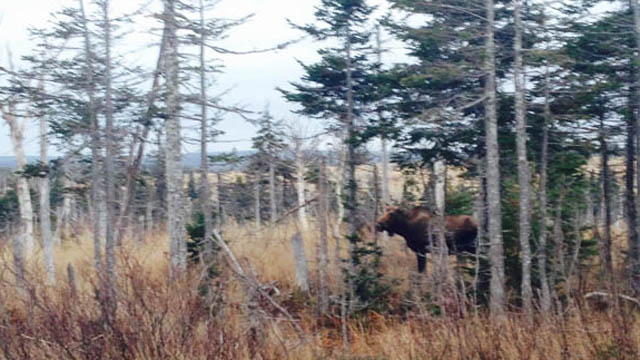
Following the declaration of a “state of emergency” ahead of the fall hunt, the provincial government has agreed to consult and collaborate with the Algonquin Nation to complete a comprehensive moose population survey in Quebec’s expansive La Verendrye Wildlife Reserve.
Last week, the nation issued a press statement and raised alarms about herd numbers dwindling within the 12,500 square kilometre park, and the direct impact of this decrease on First Nations’ food security.
As a result, Pierre Dufour, minister of Forests, Wildlife and Parks, met with representatives from Algonquin communities in Val d’Or on Aug. 16. A second exchange, this time via telephone, was held with an Algonquin spokesperson, Dufour’s chief of staff, as well as cabinet members and senior officials from the province’s forest ministry five days later, on Aug. 21.
“It was agreed that additional exchanges were required with the Algonquin communities to seek mutually satisfactory solutions to their concerns and knowledge related to the status of the moose population,” reads a government statement issued Monday.
Barrier Lake Chief Casey Ratt says the Algonquin require only a few dozen moose to provide enough meat to sustain his community through the winter months.
Other communities in the area say the same.
“It’s part of our primary food source – it’s in very high demand for the entirety of our members here. It was always an animal with multiple uses: the skin, the sinew,” said Lac Simon Councillor Lucien Wabanonik.
Whatever’s not consumed, Wabanonik says, is used up by local artists to create their wares, or for making tools – two initiatives that also provide essential revenue to the remote communities.
“What people need to understand is that it’s not necessarily hunting for sport, what we’re doing; this is really an animal that does a lot of good for us outside of just providing nutrition,” he explained.
However, Quebec hunters granted licenses in an annual lottery are taking more than their share: this year, at least 97 moose were killed in four weeks, according to Ratt.
While a “conservation plan” was put into place in 2012, it expires in 2019 – and in its function, falls well short of what the Algonquin communities feel is fair and balanced practice.
“I think even the sports hunters can agree that there are less large male [moose] now,” Wabanonik added.
Ratt said there hasn’t been a thoroughly documented survey done since at least 1994, and is more important now than ever.
The population is equally threatened by other recurring factors, such as parasites and changes to climate or habitat.
According to Dufour, the current regulations “are based on the Ministry’s inventory data and take into account the ability of the moose population to support a sustainable harvest.”
But sports hunters are, in times of unsatisfying hunts, allowed to shoot of cows and calves- dramatically impacting population growth, according to Wabanonik, who added that mating patterns for adult male moose are very specific, occurring only every three to four years.
Dufour did not address the nation’s suggestion that the reserve be closed temporarily – possibly for several years – in order to conduct this research without interference.
He did, however, mention the possibility of conducting aerial surveys starting in 2020.
A meeting is set for early September so that representatives from both sides can “arrive at a common understanding of the issues related to conservation of wildlife resources,” according to the statement.
“The Ministry confirms its commitment to establishing and maintaining relationships with the Algonquin communities based on dialogue, collaboration, trust, and mutual respect,” it reads.
“We want to be heard; we want to share some preliminary information with the Minister, and we want to find solutions and be proactive while respecting everyone in this process,” Wabanonik said.










